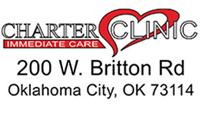1. You’ll be paying more. Even as the pace of increases in the cost of health care has eased, prices continue to rise. Consumers who get health care through work will pay 5 percent this year for premiums, an average of $6,251 ($17,545 for a family), with workers contributing an average $1,071 ($4,955 for a family). Health care costs are also increasing, along with deductibles.
The high cost of health care is having an impact on whether consumers access treatment at all. One in three Americans say they have put off medical treatment for themselves or a family member because of the cost.
2. It’s becoming easier to shop around. In addition to higher-priced plans, more consumers are enrolling in high-deductible health plans, hoping that they won’t need medical care. Cost concerns are prompting consumers to compare pricing and outcomes at various providers.
Insurers are increasingly offering tools that allow consumers to do so through their sites, and there are also several third-party apps and web sites offering similar services. “Consumers obviously want more transparency around pricing, now that they’re dealing with these huge deductibles,” says Trine Tsouderos, a director of PwC’s Health Research Institute.
3. Care goes retail. Time-crunched, cost-conscious consumers are skipping scheduled appointments with their family doctor in favor of a stop at a walk-in clinic located in a pharmacy, retail chain or supermarket. “Those models are actually letting consumers access care more quickly and at a lower cost,” says Joel White, president of the Council for Affordable Health Coverage.
The retail health industry is surging to accommodate the growing demand, with the number of clinics expected to grow 12 percent next year from around 2,150 clinics this year to about 2,400 by the end of 2016.
4. Telemedicine continues to rise. More insurers are covering telemedicine services in 2016, which also allow consumers to access health care 24/7 from home, without the inconvenience of visiting a doctor and at a fraction of the price. The cost of a telemedicine call is usually around $25 to $30 and can be covered with FSA or HSA dollars if it’s not covered by insurance.
Telemedicine is expected to grow around 40 percent per year over the next five years, from its current $645 million to more than $3.5 billion in 2020, according to a report from IBISWorld.
5. Medical-grade wearables come to market. FitBit and Apple Watch are great for the casual health enthusiast to keep track of his vitals, but the potential for so-called “medical-grade wearables,” devices designed to aid in the prevention or treatment of a specific disease is just starting to be realized. “We’re starting to see more and more devices going through the FDA approval process,” says Robin Farmanfarmaian, author of The Patient as CEO: How Technology Empowers the Healthcare Consumer.
Some products in this space include the Modus Health Watch, which the VA is using to help monitor patients with prosthetics, and the Empatica Embrace Watch, which can detect seizures in patients with epilepsy. A Soreon Research report expects the market for wearables, which is still in its infancy, to reach $41 billion by 2020, driven by growth in devices aimed at combating diabetes, sleep disorders, and cardiovascular disease.
6. Drug prices come under pressure. Lawmakers and regulators (and presidential hopefuls) have been ramping up their scrutiny of drug pricing practices amid several flagrant instances of alleged price gouging (see Turing Pharmaceuticals and Valeant), and consumer advocates are becoming more vocal about the price of even generic pharmaceuticals. Both companies have since rolled back their price increases, and experts say that while drug prices will continue to rise the practice of hiking prices purely for profit may be on the wane.
7. Medical ID theft is an even bigger problem. While technology is creating amazing gains for medical care, it’s also creating serious weak spots. A recent Accenture report projects that 1 in 13 patients (about 25 million people) will be a victim of medical ID theft due to provider data breaches. Victims of medical ID theft, in which thieves steal your Social Security number and health insurance info in order to fraudulently obtain medical services or treatment, spend thousands to restore their credit and correct inaccuracies in their medical records. Unlike banks and credit card issuers, most healthcare organizations offer no protection services for victims.
8. Your doctor may no longer be in network. As companies and insurers look for additional ways to reduce healthcare costs, they’re increasingly narrowing the networks of doctors and medical providers with whom they offer preferred rates. That means that even if you haven’t changed your insurance plan, your doctor may no longer be “in-network.”
9. Private exchanges will continue to grow. A growing number of businesses are opting out of providing traditional insurance for workers in favor of private exchanges, which allow consumers to search for health insurance in much the same way they’d search for a vacation package on Travelocity.com. The companies are providing workers with a set dollar amount they can spend on the exchanges—and employees who want a more robust plan can make up the difference out of pocket. The number of workers who buy health care on private exchanges doubled from 3 million to 6 million in 2015, and is expected to double again in 2016 to 12 million.
10. House calls make a comeback. Several start-ups around the country are now promising to deliver a doctor to your door within an hour or two. Apps like Heal in California, Curbside Care in Philadelphia, and Mend in Dallas are all aiming to bring back the old-fashioned house call. Silicon Valley isn’t the only one who sees value in bringing care to the patient. Since 2012, Medicare has been testing a home-based primary care program to see whether it can improve quality of care and stave off the need for a patient to move to a nursing home.


